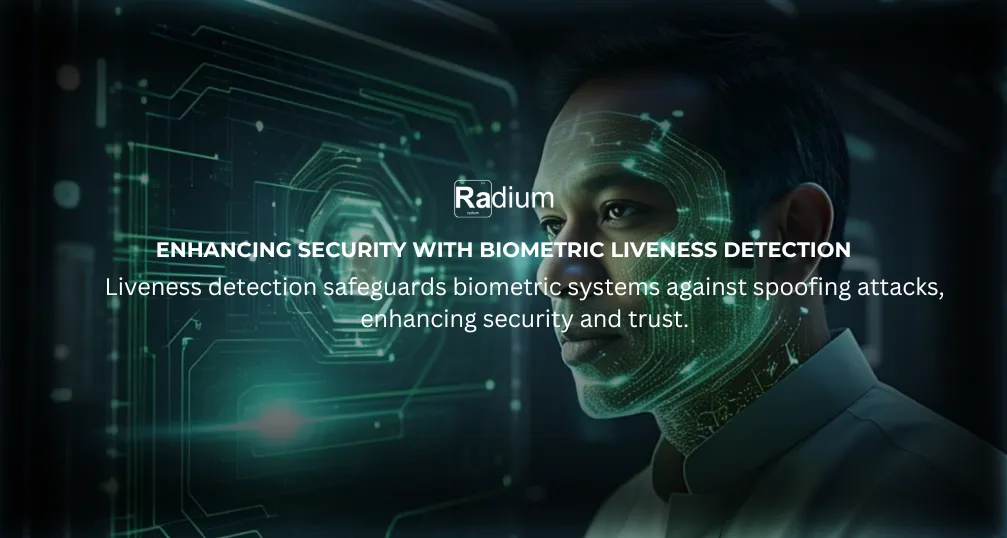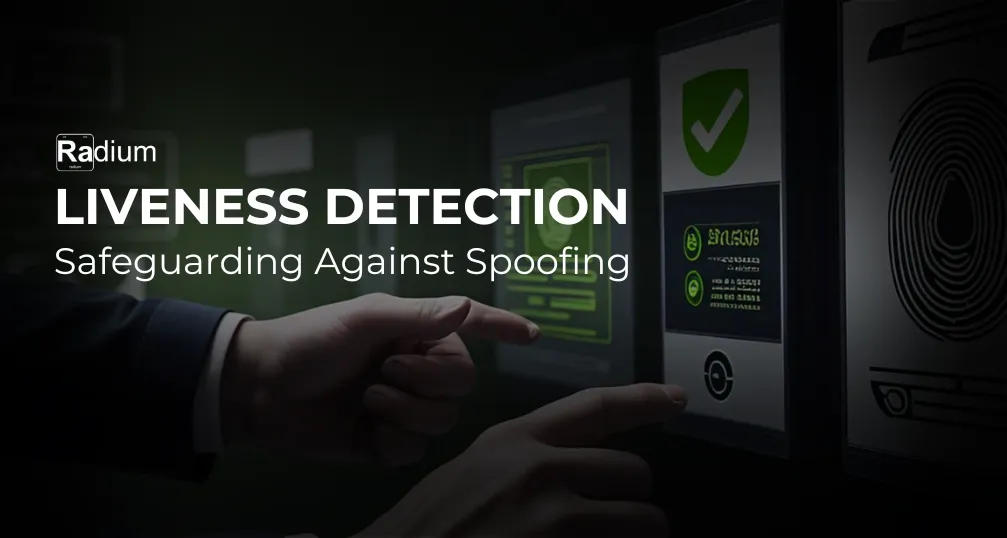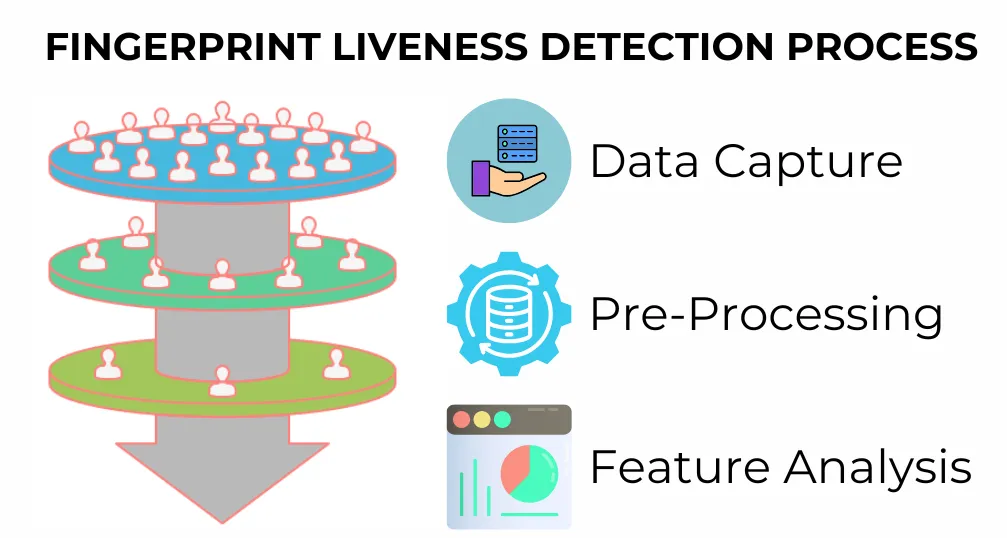
With today's ever-changing digital environment, the security and authenticity of the user identity are of utmost importance. With the increasing use of biometric authentication techniques like facial recognition, fingerprint scanning, and voice recognition, it is necessary to ensure that live, present users are providing these biometric inputs, and not by spoofing reproductions. This is where liveness testing is used as a protection mechanism against spoofing attacks and illegal access.
Liveness testing is how one determines that the origin of a biometric sample is indeed a living person at the time it is obtained. Its sole purpose is to counter presentation attacks, where a presenter employs something such as a photograph, mask, or recorded video to trick biometric systems. By including liveness detection features, systems can distinguish between genuine biometric features and spoofed impressions, increasing security.

iBeta Quality Assurance is a well-established independent third-party biometrics testing lab. NVLAP-approved Lab Code 200962-0, iBeta is a specialist in biometric technology testing to ensure that it performs at high levels of performance and security. They offer end-to-end test solutions for many biometric modalities including face recognition, fingerprint reading, palm print recognition, and voice verification. Liveness testing, which measures the robustness of a system in terms of presentation and spoofing attacks, is one of the most feature-attracting features of their testing process.
Enhancing Security Against Spoofing Attempts
Biometric systems with poor liveness detection are at risk of spoofing attacks where criminals use artificial artifacts to obtain unauthorized access to systems. For example, good-quality photographs, realistic-looking masks, or replayed voices can be used to mislead systems without liveness detection. Performing liveness testing ensures that the biometric input is from a living individual, thereby eliminating such attempts at fraud.
Building User Trust and Confidence
The greater the number of organizations that move towards biometric authentication for varied applications—both device unlocking to authenticating financial transactions—the user trust factor stands at the heart of the concern. Users are going to find themselves more accommodating of biometric systems that implement advanced security, including liveness detection, and be confident about their identities' protection from imitation and fraud.
Compliance with Industry Standards and Regulations
Different sectors are regulated to have strict authentication processes in place to safeguard sensitive data. For example, the financial industry must adhere to standards that ensure safe customer verification procedures. The integration of liveness testing ensures organizations are compliant with such regulations and therefore avoid potential legal suits and enhance their reputation.
Mitigating Risks Associated with Data Breaches
Conventional modes of authentication like passwords and PINs are prone to hacking and abuse. As biometric information is unique to a person, it offers greater security. Unless there is liveness detection, even biometric systems can be compromised. Liveness testing by ensuring live biometric inputs only are permitted adds an essential layer of protection against data compromise.
iBeta's Comprehensive Approach to Liveness Testing
iBeta employs a multi-aspect approach to liveness testing to verify that biometric systems are thoroughly tested for their capacity to counter various spoofing techniques. Their process entails:
Presentation Attack Detection (PAD) Testing
iBeta performs PAD testing in line with the requirements of the ISO/IEC 30107-3 standard, which is a protocol for determining if a system can detect presentation attacks. The testing process subjects the biometric system to a range of spoofing artifacts, including high-quality images, masks, or synthetically produced fingerprints, to test its detection ability.
Scenario and Operational Testing
Beyond the regulated laboratory setting, iBeta operates under operations and scenario testing in an attempt to find out how biometric systems will function in a real-life-like situation. This involves testing for such factors as changing lighting conditions, multiple users at the same time, and possible environmental disturbances to liveness detection.
Collaboration with Industry Standards Organizations
iBeta proactively works with organizations such as the FIDO Alliance and Android Security to ensure their test practices conform to industry best practices. With its FIDO Accredited Biometric Laboratory and Android Security Partner status, iBeta guarantees that its liveness testing services are to globally accepted standards, and clients get valid and trustworthy assessments.
Challenges and Considerations in Liveness Testing
While liveness testing significantly improves biometric security, it is not challenge-free:
Evolving Spoofing Techniques
As technology becomes more advanced, so too are the means that malicious individuals use to evade biometric systems. Methods like deepfakes and 3D-printed masks are evolving more and more in sophistication, so liveness detection algorithms need constant updates and optimization to keep pace with prospective attacks.
Balancing Security and User Convenience

Imposing strict liveness detection at times may cause more false rejections, i.e., refusing entry to legitimate users. Finding an optimal level of security and usability is vital. Deep learning-powered liveness detection solutions strive to be non-intrusive and passive with minimum user effort but high security.
Securing Privacy and Protection of Data
The collection and use of biometric data are an issue of data protection and privacy of data. Organizations must put in place the mechanisms to guard such personal information against hacking and misuse. There must be safe storage facilities under a secure ambiance, encryption protocols, and data protection laws to gain user confidence.
The Future of Liveness Testing
The landscape of liveness testing is on the cusp of great breakthroughs:
Integrating Artificial Intelligence and Machine Learning
The use of AI and machine learning in liveness detection systems facilitates more advanced algorithms with the capability to recognize subtle evidence of live presence to be developed. The technologies can also learn to evolve to handle new spoofing methods, thereby enhancing the security of biometric authentication systems.
Expansion Across Industries
Liveness detection incorporation within biometric verification systems is nowadays widespread across sectors because additional security and user-friendly interfaces are necessary. The phenomenon is also being experienced in retail and transportation businesses where companies are using biometrics to enhance the smoothness of business operations and also to enhance customer experience.
Industry Adoption of Liveness Detection
Retail Sector
Big businesses are eyeing biometric technology to make payments frictionless. Amazon, for example, has launched Amazon One, which is a payment platform through which consumers can pay with their palm veins in participating stores. Not only does the technology speed up the checkout process but it also comes with liveness detection to ensure that the biometric data is attached to a living human being and not a simulation.
Transportation and Security
The transport sector, more so airport security, is introducing facial recognition technology to increase passenger processing speed. The United States Transportation Security Administration (TSA) has rolled out facial recognition technology in selected airports where travelers can identify themselves without presenting physical identification documents. These systems utilize liveness detection, which confirms that the individual standing in front of them is the same one stored in the stored biometric data on record, introducing security features and reducing possible identity spoofing.
Advancements in Liveness Detection Technologies
The liveness detection market is witnessing significant growth, with companies attempting to develop stronger and easier-to-use solutions. Some companies have made significant advancements in enhancing the effectiveness of liveness detection:
Unissey
Unissey stood out by having successfully passed both desktop and mobile iBeta Level 2 Presentation Attack Detection (PAD) testing. This accomplishment is a testament to the versatility and strength of their passive liveness detection technology, which easily wards off sophisticated spoofing attacks, such as 3D high-definition masks. By maintaining interoperability between various devices, Unissey is a solution to the multifaceted requirements of users from various environments.
IDEMIA
IDEMIA, a leading provider of augmented identity solutions, has achieved iBeta Level 1 and Level 2 certification for their liveness detection solution. Their approach is to integrate liveness detection into software development kits (SDKs) like SmartBio® and WebBioServer®, wherein customers can deploy multi-channel identity verification within mobile applications as well as web channels. This enables companies to roll out more powerful security without disrupting the user experience.
Jumio
Jumio has augmented its selfie-authentication platform with the addition of iBeta Level 1 and Level 2 certified anti-spoofing liveness detection technology through its collaboration with FaceTec. With this integration, a 3D representation of the face of the user can be mapped from live video, thereby becoming a highly advanced and highly secure authentication solution. The system is also able to function on various devices, making it accessible and convenient for users.
Innovatrics
Innovatrics has designed a passive liveness detection technology that is exclusively on-device with no data transmission to remote servers. This makes authentication less latently and helps in maintaining privacy for users. Their technology is iBeta Level 2 certified, which tests resistance against high-end spoofing techniques such as 3D masks. On-device processing helps Innovatrics overcome problems regarding data security as well as conformity with privacy regulations.
Accura Scan
Accura Scan has achieved ISO/IEC 30107-03 compliance following its successful iBeta Level 2 audit with a 0% False Acceptance Rate (FAR). The face biometric liveness offering of the company has undergone intense testing for attempts through 3D masks and silicone impressions. This testifies to the seriousness of Accura Scan to deliver secure and reliable identity verification solutions, particularly in markets like India, Singapore, and the remaining APAC and Middle East countries.
Balancing Security and User Experience
Though increased security is a benefit through the integration of liveness detection, it is important to balance this with convenience to the user. Extremely intrusive or laborious authentication methods can drive users away and affect biometric system adoption. To avoid this, businesses are moving towards creating passive liveness detection that works quietly in the background with minimal user intervention. This method provides strong security without making the user experience suffer.
Fingerprint liveness detection is an essential part of contemporary biometric authentication systems, ascertaining that the fingerprint offered is from a living person and not a replica or spoof. The process of such a system consists of various important stages, each playing a role in the correct identification of fingerprint authenticity.
1. User Interaction
The user starts the process by putting their finger on the fingerprint scanner. The first interaction is simple and intuitive to promote user compliance and facilitate smooth integration into a wide range of applications.
2. Data Capture
When they are touching, the sensor module captures fingerprint information. Sophisticated systems employ sensors that can capture data in multiple layers and formats, such as:
Surface and Sub-Surface Imaging: Taking photos of the surface of the outer skin and the structures beneath improves the capability to capture liveness signs, including blood circulation or skin elasticity.
Thermal Imaging: Sensitive to the natural heat of live tissue, live fingers can be separated from replicas.
Spectral Imaging: Scanning imaging of skin characteristics with varying wavelengths of light can detect absent live skin characteristics in forgeries and aid spoof detection.
These varied modes of acquisition lead to a reasonably good fingerprint approximation, and the system is made spoofing attack-resistant.
3. Pre-processing
Raw sensor data will often include noise or distortions based on environment or user-specific parameters. Pre-processing is the process of using signal processing techniques to improve the quality of the data, which includes:
Noise Reduction: Deleting duplicate data to permit more distinct fingerprint images.
Contrast Enhancement: Adjusting image brightness and contrast to highlight ridge and valley features.
Normalization: Transforming the data into a standard format so that features can be extracted dependably.
Good pre-processing ensures that the subsequent analysis is performed on good data, a necessity for liveness detection to be dependable.
4. Feature Analysis and Machine Learning Classification
At this level, the system derives characteristic features from pre-processed data keeping in mind those features that establish liveness, including:
Texture Patterns: Study of micro-textures of valleys and ridges of a fingerprint.
Ridge Frequency and Orientation: Study of spatial frequency and orientation of ridges of a fingerprint.
Pore Detection: Detection of sweat pores, which are typically present in live skin.
Such characteristics are then given as input to an algorithm specifically trained to differentiate between genuine and spurious fingerprints. Powerful algorithms such as convolutional neural networks (CNNs) have seen high accuracy here. For instance, experiments have shown that the use of methods based on CNNs can bring about a combined accuracy rate of 97.1% to correctly identify the samples, compared to an increase of orders much higher than by using traditional means.
5. Decision Making
The system calculates a liveness score as a function of the probability that a fingerprint was collected from a living source. The score is then contrasted with a threshold value to determine:
Accept: If the liveness score is above the threshold, the fingerprint is real, and access is allowed.
Reject: When the score falls below the threshold, the fingerprint is false, and access is denied.
The inclusion of additional indicators, i.e., thermal data or pulse detection, can also improve the accuracy of decisions by providing additional evidence of liveness.
6. Feedback and Learning
Feedback loops need to be maintained and tuned in the process of further improving system performance, particularly in dynamic threat scenarios. Active feedback entails the system recording data on every authentication request, successful or unsuccessful. The data is utilized in a range of different ways:
Model Update: Online learning procedures take the data collected to update and retrain the machine learning model with new spoofing techniques and reduce false acceptance or rejection.
System Calibration: Ongoing monitoring of feedback data allows ongoing system parameter adjustment for reliable operation with various user groups and environmental settings.
Having a robust feedback loop is critical to the system's robustness and long-term performance in detecting sophisticated spoofing attacks.
Briefly, a fingerprint liveness detection system works based on a methodical process of user interaction, data capture, pre-processing, and feature analysis classification using machine learning, decision-making, and constant feedback to learn. All these are essential in the way that they enable the system to distinguish adequately between real fingerprints and simulated ones and hence enhance security and reliability in biometric authentication systems.
Conclusion
The significance of biometric authentication liveness testing cannot be exaggerated. Since increased numbers of companies are now embracing the use of biometrics, these systems have to be able to differentiate between actual users and spoofing attacks so that security and user faith can be guaranteed. Companies such as iBeta have an important role to play in establishing industry standards and performing exhaustive tests to validate the effectiveness of liveness detection solutions. As the industry matures, cooperation among industry stakeholders, regulators, and technologists will remain vital in enabling increased innovation in liveness detection solutions that are safe and available.
The existence of strong liveness detection functionality protects against advanced spoofing attacks, in addition to ensuring compliance with regulatory obligations and building trust in biometric authentication systems. Due to ever-advancing technology, ongoing development of liveness detection solutions will be key to guaranteeing conformity with emerging security threats and the integrity of biometric systems across multiple applications.
Liveness detection is a security mechanism used in biometric applications to verify that the biometric sample submitted—e.g., fingerprint, face, or voice—belongs to a living individual who was available during capture. This prevents unauthorized access through the use of impersonator representations such as images, masks, or pre-recorded voices.
Liveness detection is required because it contributes to the security of biometric systems by distinguishing genuine biometric features from fake replicas. It helps prevent spoofing attacks, where intruders attempt to deceive the system using fake biometrics.
Liveness detection is carried out in diverse ways, mainly classified as:
Active Liveness Detection: Demands user action, for example, blinking, smiling, or head movement, to authenticate liveliness.
Passive Liveness Detection: Verifies intrinsic physiological indicators such as blood flow, skin texture, or involuntary facial movement without explicit user action.
These approaches guarantee the biometric sample comes from a live individual and not a two-dimensional image or imitation model.
While no security system is invincible, next-generation liveness detection technologies are designed to defeat spoofing by high-quality masks, images, or videos. Constant innovation in technology aims to counter new threats and improve detection.
Not all biometric systems use liveness detection. Its use varies with the security needs of the application. High-security applications, like financial services or secure access to facilities, are more likely to use liveness detection in order to ensure that unauthorized people cannot gain access.
Upcoming liveness detection software is kept nonintrusive, and it is likely most of them would already be executed in the background without asking any extra effort from the user. Passive liveness detection, as an example, tries to augment security without detracting from convenience for the users.
The challenges are to maintain accuracy with various populations, under diverse environmental conditions, and in the face of highly sophisticated spoofing attacks. Maintaining security robust and simple is also the largest challenge.
As security is being introduced with liveness detection, the process is one involving the use of sensitive biometric information. Solutions need to be data protection law compliant, have safe storage of data and processing of biometrics, and be transparent about data use to consumers.